History/General Info
For the second half of the 1998 model year, Dodge made some major mechanical changes to their diesel-powered trucks. Ram 2500/3500 trucks maintained their signature body style with some slight cosmetic changes but received a new modified version of the 5.9L diesel engine. Leading the field and competition in horsepower and torque has played an important role throughout the history of the automotive industry, none more so than the ultra-competitive diesel marketplace. This ultimately helped lead to the introduction of the 24-valve diesel engine.
24-Valve
The big upgrade on the 5.9L diesel engine midway thru 1998 (or 1998.5 as it is often referred to) was doubling the number of valves in the cylinder head from 2 valves to 4 valves per cylinder. The combination of increased valves, as well as an enhanced fuel system, significantly increased airflow and provided more precise fueling, all while delivering more horsepower and torque. Incorporating 4 valves per cylinder not only gave the engine more power but also provided enhanced throttle response and a broader torque curve.
Maintaining the legendary level of reliability was another major focus when redesigning the 5.9L. The existing cast-iron block and cylinder head were already proven commodities and were more than capable of handling the increase in power. The forged steel crankshaft and connecting rods were also carried over due to their durability. The fuel system was upgraded to increase performance with a new fuel injection pump that replaced the Bosch VP44 pump. In addition, the new electronically controlled VP44 injection pump was responsible for pressurizing the fuel, controlling the injection timing, and monitoring fuel flow.
While the injection pump on the 24-valve was electric, the injectors remained mechanical. The high-pressure mechanical injectors were redesigned to inject fuel into the center of the piston. In addition to the new centrally located fuel injectors, the piston fuel bowls were redesigned to match the injector’s new spray pattern. The 24V engine continued to utilize the Holset HX35W turbocharger until 2001-2002 when trucks with automatic transmissions were fitted with the Holset HY35W.
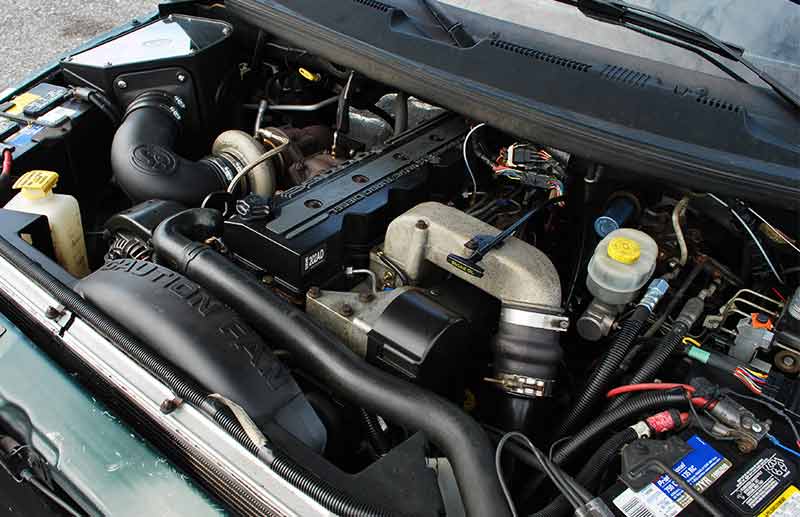
Horsepower/Torque
From 1998.5-1999 trucks paired with an automatic transmission were rated at 215 hp and 420 lb-ft of torque. The power levels got a slight bump to 235 hp and 460 lb-ft of torque from 2000-2002. The standard-output 2nd generation trucks paired with a manual transmission were rated at 235 hp and 460 lb-ft of torque. Furthermore, for the 2001 model year, Dodge introduced a new high-output (H.O.) 24V engine, that featured upgraded fuel injectors and an upgraded VP44 Pump. The H.O. version of the 5.9L was rated at 245 hp and 505 lb-ft of torque.
Transmissions
For the 1998.5-2002 model years, the diesel was paired with an NV4500 5-Speed manual or a 47RE 4-speed automatic transmission. A new NV5600 6-speed manual transmission was offered beginning in 1999 and utilized a 1.25″ input shaft. In addition, a larger 1.375″ input shaft version of the NV5600 was used exclusively on the 2001-2002 High-Output diesel. The NV5600 6-speed transmission was therefore a necessity and allowed for the additional horsepower and torque found on the H.O. engine.
As with most automatic transmissions of this diesel era, the stock 47RE automatic transmission was not the most stout transmission. Issues can arise and are even more prevalent when additional horsepower is added. For this reason, it can be a worthwhile investment to upgrade the torque converter and internal components, especially on modified trucks.
VP44 Issues
Over the years, the VP44 has earned itself a bad reputation due to a high volume of pump failures. The most common problem with these pumps is that the rotor is known to seize up. In any case, the factory lift pump could not supply enough fuel, which was possibly on of the reasons these pumps fail. Another contributing factor was most likely the result of the low lubricity levels of the more modern ultra-low sulfur fuels. For this purpose, installing an aftermarket fuel pressure gauge and keeping a close eye on the fuel pressure feeding the pump is highly recommended.
“53” Blocks
1999-2002 models equipped with the “53” blocks (the number 53 is physically cast into the driver side of the block) are known to crack over time. If or when the block cracks it will begin leaking coolant and will require engine block replacement. Although many try and make do with temporary fixes as they put off the inevitable and expensive replacement, there is no permanent solution or repair. Some owners just top off the coolant, while others try repairing it with epoxy or block stitching. Unfortunately, you are just biding time as the block will more than likely crack again. It is just too thin in this area and cannot be properly repaired, so replacing the block is the only real fix.
Dead Pedal
Another common issue for the 2nd-Gen is Accelerator Pedal Position Sensor (APPS) failure, otherwise known as a “Dead Pedal.” When the APPS sensor fails, you can completely lose any throttle response and become stranded. Sometimes a bad or failing APPS can set data trouble codes (DTC’s) such as P0122 (Throttle Position Sensor Voltage Low) or P0123 (Throttle Position Sensor Voltage High). You can try cleaning the sensor to see if it helps, but it will most likely need eventual replacement.
Pros/Cons
Pros
- H.O. Version
- 4 Valves Per Cylinder
- Legendary Diesel Reliability
- NV5600 6-Speed Manual Transmission
- Quad Cab Model with Opening Rear Doors
Cons
- VP44 Injection Pump
- Weak Automatic Transmission
- “53” Blocks are Known to Crack
- No Crew Cab Model Offered
- Typical Rust Issues (Especially in the Snow Belt)
24V 5.9L Diesel Review
The tried-and-true 5.9L is a dependable workhorse and will easily outlast the rest of the truck. The 24-valve offers more power, improved throttle response, and a broader torque curve than its 12-valve predecessor. Even with performance upgrades, these engines can hold up for hundreds of thousands of miles before having to complete any major repairs. In any case, 2001-2002 model years with H.O. engine and the NV5600 6-speed manual are some of the most desirable models. As with most older pickups, finding a truck without extensive rust can be difficult depending on your area.
1998.5-2002 Dodge 5.9L 24-Valve Popular Aftermarket Upgrades
The 5.9L 24V Diesel is relatively simple to work on and a very reliable engine. The inline 6-cylinder layout also offers ample room when you are working in the engine compartment.
1. Dash Mounted Tuner/Programmer/Performance Module
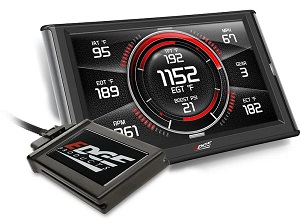
Add up to 120 hp and 350 lb-ft of torque in a matter of minutes without breaking a sweat. A dash-mounted tuner also gives you the ability to monitor all your vital engine and transmission parameters which can be extremely important.
2. Air Intake System
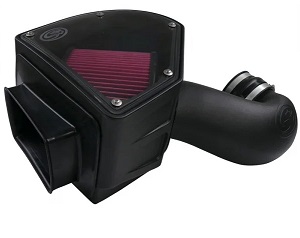
Replace the stock restrictive air filter with a freer-flowing Air Intake System and help your engine breathe better.
3. Exhaust
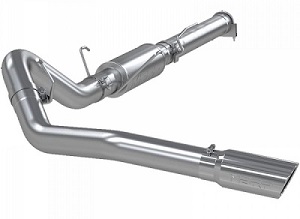
Mandrel bends and larger diameter piping will help free up additional power in your truck. For this reason, an aftermarket exhaust system is one of the most popular modifications in any vehicle.
4. Fuel Injectors
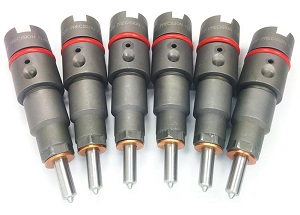
Over time the fuel injectors can begin to wear. New or remanufactured injectors are available and can help restore the power back to your truck.
5. Lift Pump
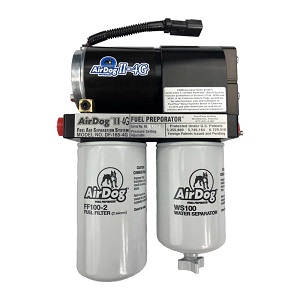
A high-performance diesel engine demands higher fuel flows. The best way to do this and prevent air/vapor in the fuel system is with a quality Lift Pump (Air/Fuel Separation System) such as one from Air Dog or FASS.
6. Performance Valve Springs & Retainer Kit
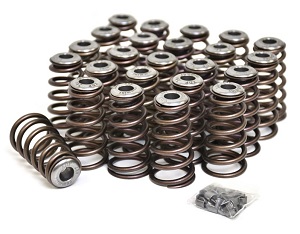
The factory valve springs in the stock application were not designed to handle the increased engine RPM and elevated boost levels that are often found in modified applications. A set of Performance Valve Springs & Retainers can help upgrade your valvetrain for higher horsepower applications.
7. Intake Manifold
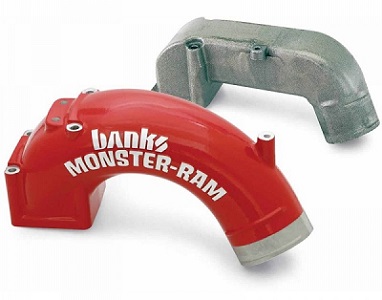
Enlarge the inlet area and optimize air distribution in the cylinder head with an aftermarket intake manifold.
8. Intercooler
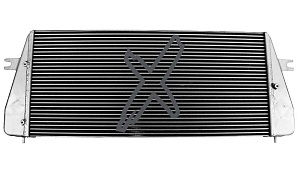
Many aftermarket intercoolers are typically stronger than the factory units they replace. A more rugged bar and plate design can be better suited to handle the additional requirements of upgraded trucks.
9. Turbocharger
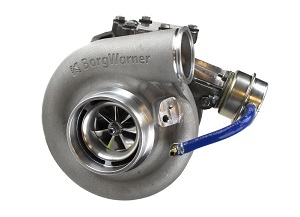
Whether you are simply replacing a damaged or failing turbocharger, or upgrading, a new turbocharger can make a big improvement.
1998.5-2002 Dodge Ram 5.9L 24V Diesel Specifications
| Production Years: | 1998.5, 1999, 2000, 2001, 2002 | |
| Model Availability: | Ram 2500, Ram 3500 | |
| Common Names: | 5.9, 5.9L, 24V, 24 Valve, ISB | |
| Configuration: | Inline 6 cylinder | |
| Displacement: | 359 cubic inches, 5.9 liters | |
| Bore: | 4.02″ (102mm) | |
| Stroke: | 4.72″ (120mm) | |
| Cylinder Head: | Cast Iron | |
| Engine Block: | Cast Iron w/ 6 Head Bolts Per Cylinder | |
| Firing Order: | 1-5-3-6-2-4 | |
| Compression Ratio: | 16.3:1, 17.0 : 1 for High Output Models | |
| Crankshaft: | Forged Steel, 7 Main Bearings | |
| Pistons: | Cast Aluminum | |
| Connecting Rods: | Forged-Steel, I-Beam | |
| Intake Manifold: | Cast Aluminum | |
| Injectors: | Bosch | |
| Injection: | Direct Injection (DI), Mechanical Injection Pump, Mechanical Fuel Injectors | |
| Fuel Pump: | Bosch VP44 Injection Pump | |
| Aspiration: | 1998.5-2002 | Holset HX35W Turbocharger, Air-To-Air Intercooler |
| 2001-2002 (Automatics) | Holset HY35W Turbocharger, Air-To-Air Intercooler | |
| Valvetrain: | OHV, 4 Valves Per Cylinder, Solid Lifter Camshaft | |
| Valve Lash (Clearance): | Exhaust Valve: | 0.020″ (Engine Cold) |
| | Intake Valve: | 0.010″ (Engine Cold) |
| Weight: | Approx. 1,150 lbs (Dry) | |
| Oil Capacity: | 12 qts w/ Filter (11.4L) | |
| Governed Speed: | 3,200 rpm | |
| Horsepower: | 1998.5-2000 | 215 hp @ 2,700 rpm (Auto Trans) 235 hp @ 2,700 rpm (Manual Trans) |
| 2001-2002 | 235 hp @ 2,700 rpm (Auto trans) 245 hp @ 2,700 rpm (H.O.) (Manual trans) | |
| Torque: | 1998.5-2000 | 420 lb-ft @ 1,600 rpm (Auto Trans) 460 lb-ft @ 1,600 rpm (Manual Trans) |
| 2001-2002 | 460 lb-ft @ 1,400 rpm (Auto Trans) 505 lb-ft @ 1,600 rpm (H.O.) (Manual Trans) | |
| Battery: | Group Size 27 | |
| Transmissions: | 1998.5-2002 | NV4500 5-Speed Manual |
| 1999-2002 | NV5600 6-Speed Manual (1.25″ Input Shaft) | |
| | 1998.5-2002 | 47RE 4-Speed Automatic |
| 2001-2002 (H.O.) | NV5600 6-Speed Manual (1.375″ Input Shaft) |
Fluid Specifications & Capacities
| Engine Oil: | 15W-40 | Ambient Temperature > 10° F | 12.0 Qts Capacity w/ Oil Filter (11.35L) |
| | 10W-30 | Ambient Temperature 0 – 30° F w/o Block Heater, < 0° F | 12.0 Qts Capacity w/ Oil Filter (11.35L) |
| | 5W-30 | Ambient Temperature < 0° F w/ Block Heater | 12.0 Qts Capacity w/ Oil Filter (11.35L) |
| Engine Coolant: | 50/50 Mixture – Mopar 5 year/100,000 mile, Distilled Water | Approx. 6 Gallon Capacity | |
| Automatic Transmission Fluid: | 47RE 4-Speed | ATF+4 | 4.0 qts Service Refill Capacity 14.5 – 16.5 qts Dry Fill Capacity |
| Manual Transmission Fluid: | NV4500 5-Speed | SAE 75W-90 | 4.0 qts (8 pts) |
| NV5600 6-Speed (H.O.) | Mopar Manual Transmission Fluid | 4.75 qts (9 pts) | |
| Transfer Case Fluid: | NV231HD | ATF+4 | 1.25 qts |
| NV241 | ATF+4 | 2.3 qts | |
| | NV241HD | ATF+4 | 3.25 qts |
| Front Differential Fluid: | Dana 60 | SAE 75W-140 | 3.15 qts |
| 9.25″ AAM | SAE 75W-90 GL-5 | 2.45 qts | |
| Rear Differential Fluid: | Dana 70 2WD | SAE 75W-140 | 3.5 qts |
| | Dana 70 4WD | SAE 75W-140 | 3.9 qts |
| | Dana 80 2WD | SAE 75W-140 | 3.2 qts |
| | Dana 80 4WD | SAE 75W-140 | 4.8 qts |
| 10.5″ AAM | SAE 75W-90 or 75W-140* GL-5 | 2.65 qts | |
| 11.5″ AAM | SAE 75W-90 or 75W-140* GL-5 | 3.8 qts |
Maintenance Schedule
| Service Procedure | Interval |
| Replace Engine Oil & Filter: | 6,000 miles/6 months under normal driving conditions 3,000 miles/3 months under severe driving conditions |
| Replace Fuel Filter: | 12,000 miles/12 months under normal driving conditions 6,000 miles/6 months under severe driving conditions |
| Replace Air Filter: | 24,000 miles/24 months |
| Engine Cooling System: | 52,500 miles/36 months and then every 24,000 miles/24 months |
| Check/Adjust Valve Lash: | 24,000 miles/24 months |
| Replace Automatic Transmission Fluid & Filter: | 30,000 miles |
| Adjust Automatic Transmission Bands: | 24,000 miles/24 months |
| Replace Manual Transmission Fluid: | 60,000 miles |
| Replace Transfer Case Fluid: | 120,000 miles |
Disclaimer: XDP is in no way affiliated with Cummins or any of its subsidiaries or related companies, and that Cummins has not authorized the sale of any of XDP’s parts, and has not tested or approved any of XDP’s parts for use in genuine Cummins brand products.
